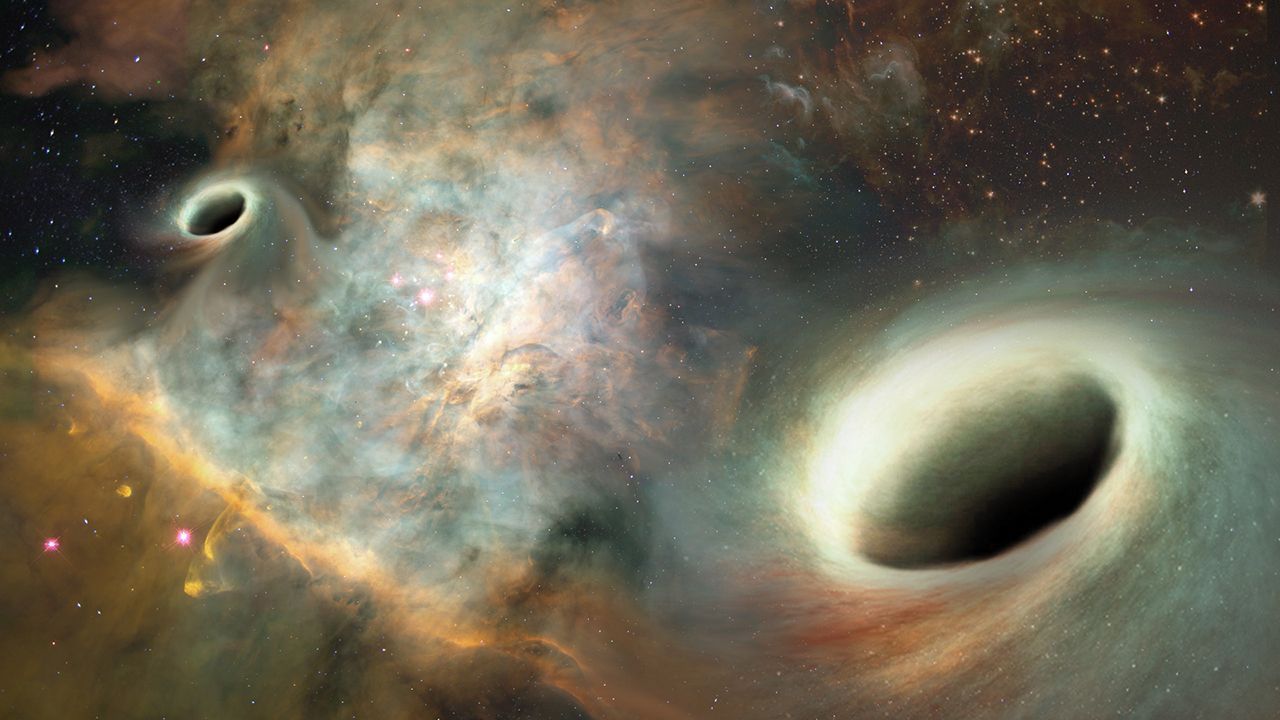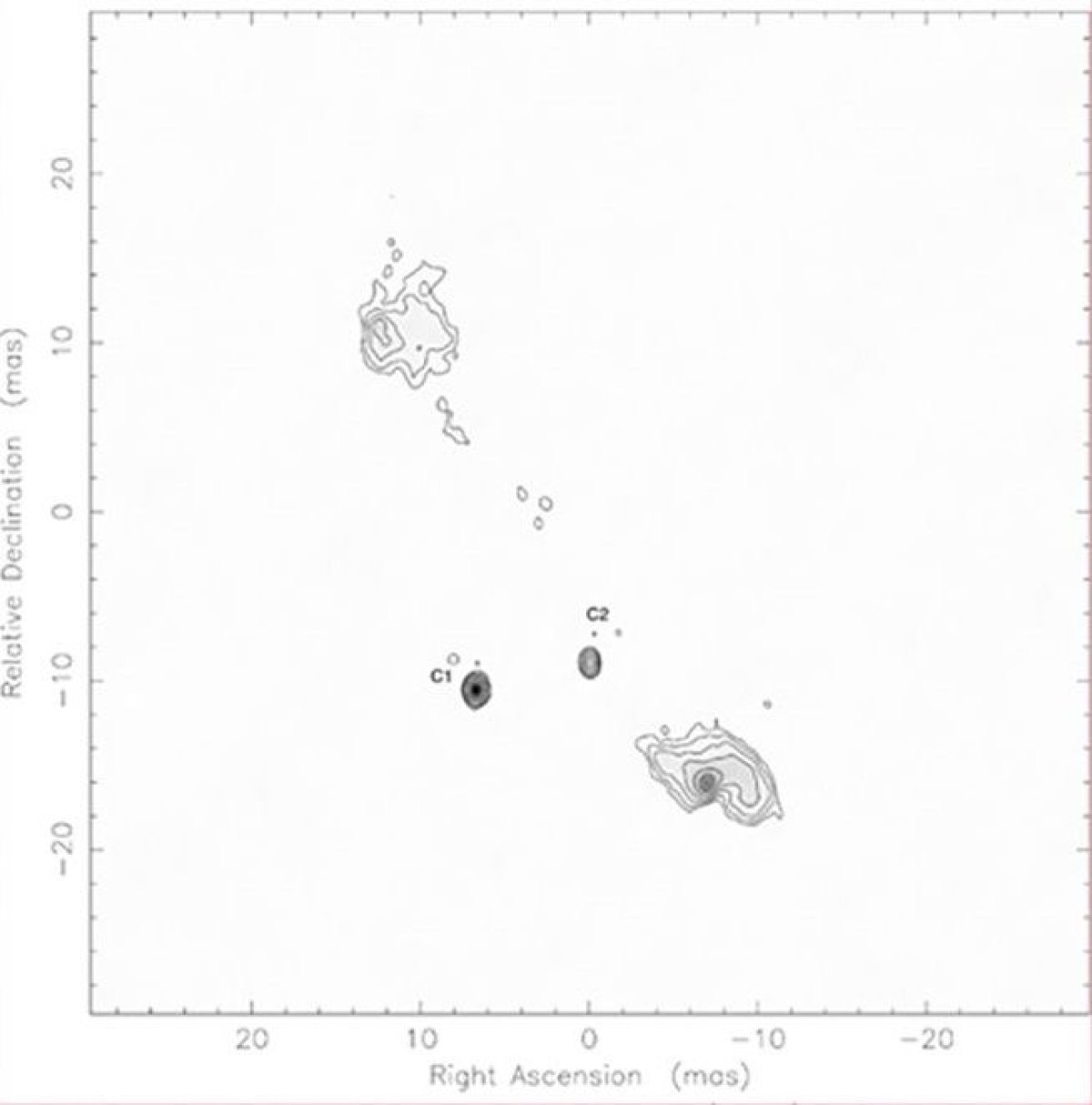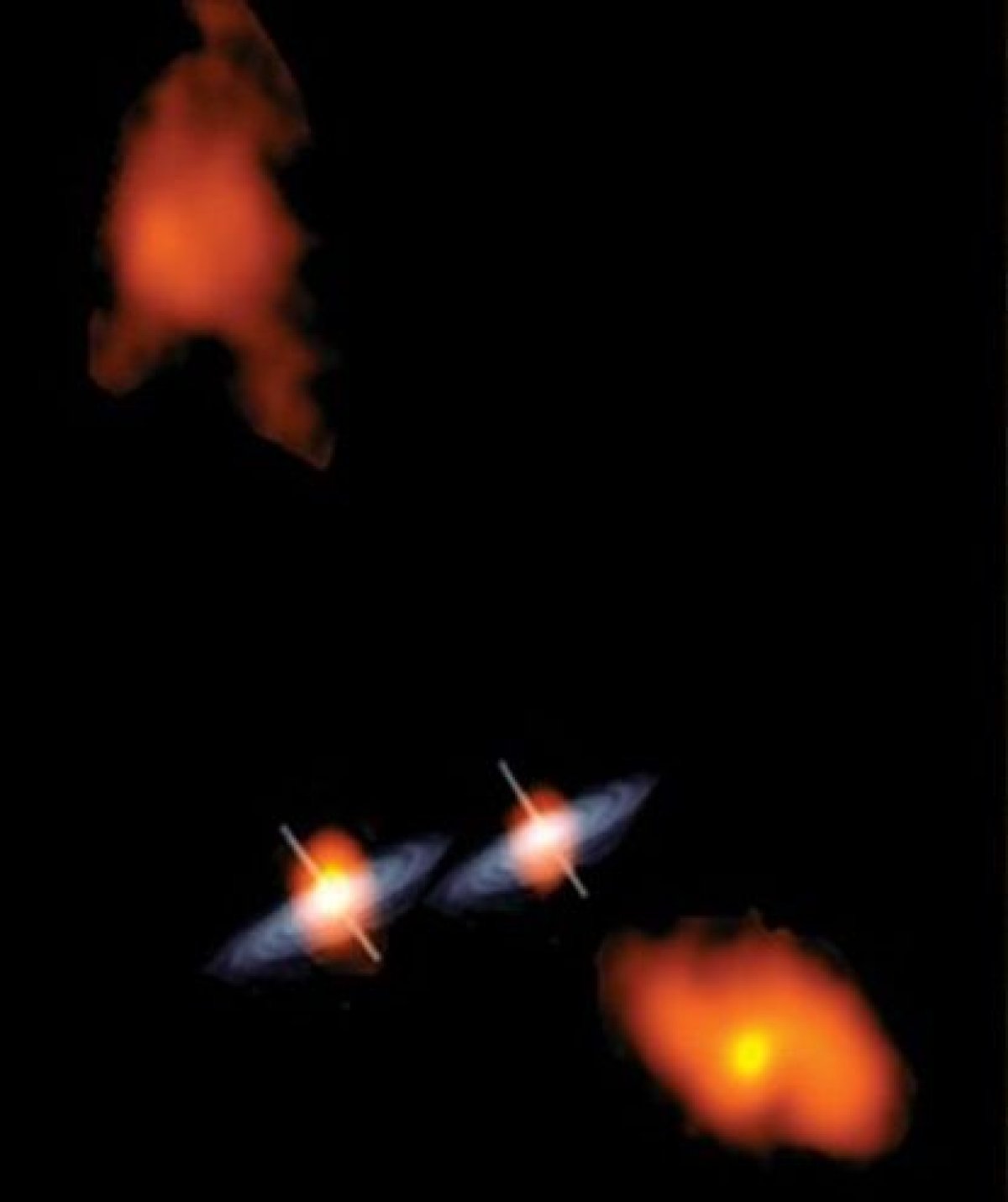
Updated | Scientists have directly observed a pair of supermassive black holes 750 million light years away orbiting one another. If confirmed with follow-up research, this will be the first time two black holes have ever been seen moving in relation to one another.
This discovery sheds light on what happens just before two black holes collide—a catastrophic event that causes ripples in spacetime (gravitational waves) that echo throughout the universe. Furthermore, with the Milky Way poised to smash into our neighboring galaxy Andromeda in around 4 billion years, the findings could help us understand what will happen to our own part of the cosmos.
Large galaxies—like our own—are thought to have black holes at their centers. Galaxies move around the universe and occasionally end up bumping into each other, causing a cosmic merger. When this happens, scientists believe the two black holes orbit one another until they eventually combine. But direct observations of this happening have never been recorded.
A team of U.S. researchers began observing a pair of supermassive black holes in the galaxy 0402+379 12 years ago. These black holes are huge—combined, they have a mass 15 billion times that of our sun. As a result, their orbital period is also long—between 20,000 and 30,000 years.
Read more: Forget Planet 9—there's Evidence of a Tenth Planet Lurking at the Edge of the Solar System
This long orbital period, combined with them being fairly close together (in astronomical terms), makes measuring their movements difficult. The movement scientists are looking for is called the angular motion—the curved motion that you would see when two objects orbit each other.
"If you imagine a snail on the recently discovered Earth-like planet orbiting Proxima Centauri—a bit over four light years away—moving at one centimeter a second, that's the angular motion we're resolving here," study co-author Roger W. Romani, professor of physics at Stanford University, said in a statement.

To measure these movements, the team used the Very Long Baseline Array—10 radio telescopes located across the U.S.—to observe different radio signals coming from the supermassive black holes. Over the years, they were able to build up a picture showing their trajectories. Their findings, published in The Astrophysical Journal, show that the pair are indeed orbiting one another.
"While additional observations are needed to confirm this motion and obtain a precise orbit, this is apparently the first black hole system resolved as a visual binary," they write.
Read more: Without a Big Bang, the Universe Would Have Crumpled and Collapsed Immediately
"For a long time, we've been looking into space to try and find a pair of these supermassive black holes orbiting as a result of two galaxies merging," said Greg Taylor, from the University of New Mexico. "Even though we've theorized that this should be happening, nobody had ever seen it until now."

The team plans to continue observing the black holes over the next three to four years to confirm their orbits and the discovery. When will the supermassive black holes collide? The researchers say this may never happen. They are moving at such a slow pace, that at their current rate they will still be orbiting one another when the universe ends, billions or trillions of years from now.
However, the team say the current findings should help scientists better understand what happens before a black hole merger and how galaxies evolve. "Supermassive black holes have a lot of influence on the stars around them and the growth and evolution of the galaxy, so understanding more about them and what happens when they merge with one another could be important for our understanding for the universe," Taylor said.
Rafael Alves Batista, from Physics Department of the University of Oxford, commented on the study. "This is a very important discovery," he tells Newsweek in an email interview.
"While it has been theorised for some time that two SMBHs can merge, this had never been observed because usually the two SMBHs merge or they don't stick together. This is the first reason why this is such an important discovery. Secondly, because SMBHs are found in the centre of galaxies and amount for a significant fraction of the galaxy's mass, understanding their dynamics in the presence of another SMBH plays an important role for understanding how galaxies evolve."
He says that if there is a galaxy with an unusually large black hole at its center, this could have been the result of a supermassive black hole merger.
"The merging of two SMBHs is also a potential source of gravitational waves, last year's most notorious scientific breakthrough," he adds. "Maybe in the future we can simply look for gravitational wave signals from SMBH-SMBH encounters to look for merging SMBHs."
This story has been updated to include quotes from Rafael Alves Batista.
Uncommon Knowledge
Newsweek is committed to challenging conventional wisdom and finding connections in the search for common ground.
Newsweek is committed to challenging conventional wisdom and finding connections in the search for common ground.
About the writer
Hannah Osborne is Nesweek's Science Editor, based in London, UK. Hannah joined Newsweek in 2017 from IBTimes UK. She is ... Read more
To read how Newsweek uses AI as a newsroom tool, Click here.








